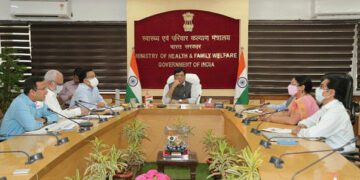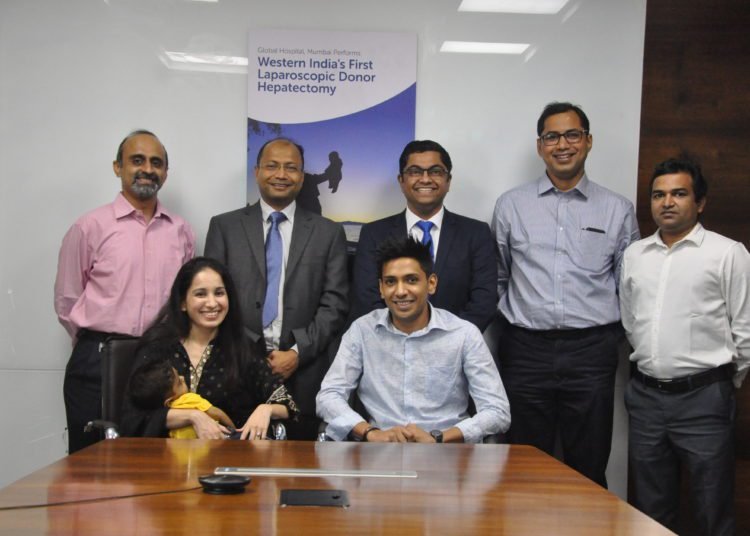By Health In Five Writer
A team led by Dr. Ravi Mohanka, Chief Surgeon and Head of Department, Liver Transplant and HPB Surgery, Global Hospital, Mumbai successfully performed liver resection by laparoscopic surgery on a 32-year-old live donor for liver transplantation and gave a new lease of life to his 1-year-old son.

A liver resection surgery is the surgical removal of all or a portion of the liver. The procedure is largely performed through a traditional open procedure. In a total laparoscopic donor hepatectomy, the surgery is done through keyhole incisions with the graft being taken out of the body through a small incision under the navel. Living donor liver transplant (LDLT) has distinctly reduced waiting list mortality and expanded access to life-saving treatment for many patients.
32-year-old Mr. Wazir Khan from South Africa donated a part of his liver (Left lateral Lobe) to his one-year-old ailing son Baby Nayum Khan, suffering from a congenital condition called Biliary Atresia, a rare disease of the liver and bile ducts that occurs in infants (1 out of every 10,000 live births) which requires transplantation.
Dr. Ravi Mohanka, Chief Surgeon and Head of Department, Liver Transplant and HPB Surgery, Global Hospital, Mumbai said, “The patient came to us after a failed Kasai surgery for Biliary atresia. After clinical tests, the father was found to be a suitable donor and he agreed to donate a part of his liver to save his child. It was decided to perform hepatectomy (surgical removal of part or entire liver) using minimally invasive laparoscopic surgery technique. A total laparoscopic donor hepatectomy is a safe and feasible option as it has benefits that include less pain, less blood loss, less morbidity, and complications, quicker recovery, and cosmetically good for a young donor. All of these will encourage more donations.”
Dr. Prashantha Rao, Senior Consultant, Lead – Cadaveric Liver Transplant, Global Hospital Mumbai said, “In open surgery, a long (approximately 15-20 cm) T shaped incision is made, and pain can be there for 2-3 years. In this patient, a minimally invasive technique was used for hepatectomy, keyhole incisions, and a small incision was made in the lower part of the abdomen for graft retrieval. Post-surgery, there is no sign of scar and the recovery period of the donor is reduced. The minimally invasive technique benefits the living donor, who experiences better postoperative recovery and a quicker return to normal life, less pain, smaller scars, and lower risk of an incisional hernia compared with traditional open surgery.”
Dr. Anurag Shrimal, Senior Consultant, Lead – Pancreas and Pediatric Liver Transplant Surgeon, Global Hospital Mumbai said, “Following all guidelines and protocols, Baby Nayum Khan underwent a successful liver transplant surgery. He had an excellent post-op recovery and the family will be ready shortly to travel back to South Africa.”
“Very few centers in the world have the expertise to perform the total Laparoscopic Donor Hepatectomy and we are delighted to have this expertise in our hospital. This technique would encourage more people to participate in living donor liver transplantation” concluded Dr. Vivek Talaulikar, CEO of Global Hospitals Mumbai.







































